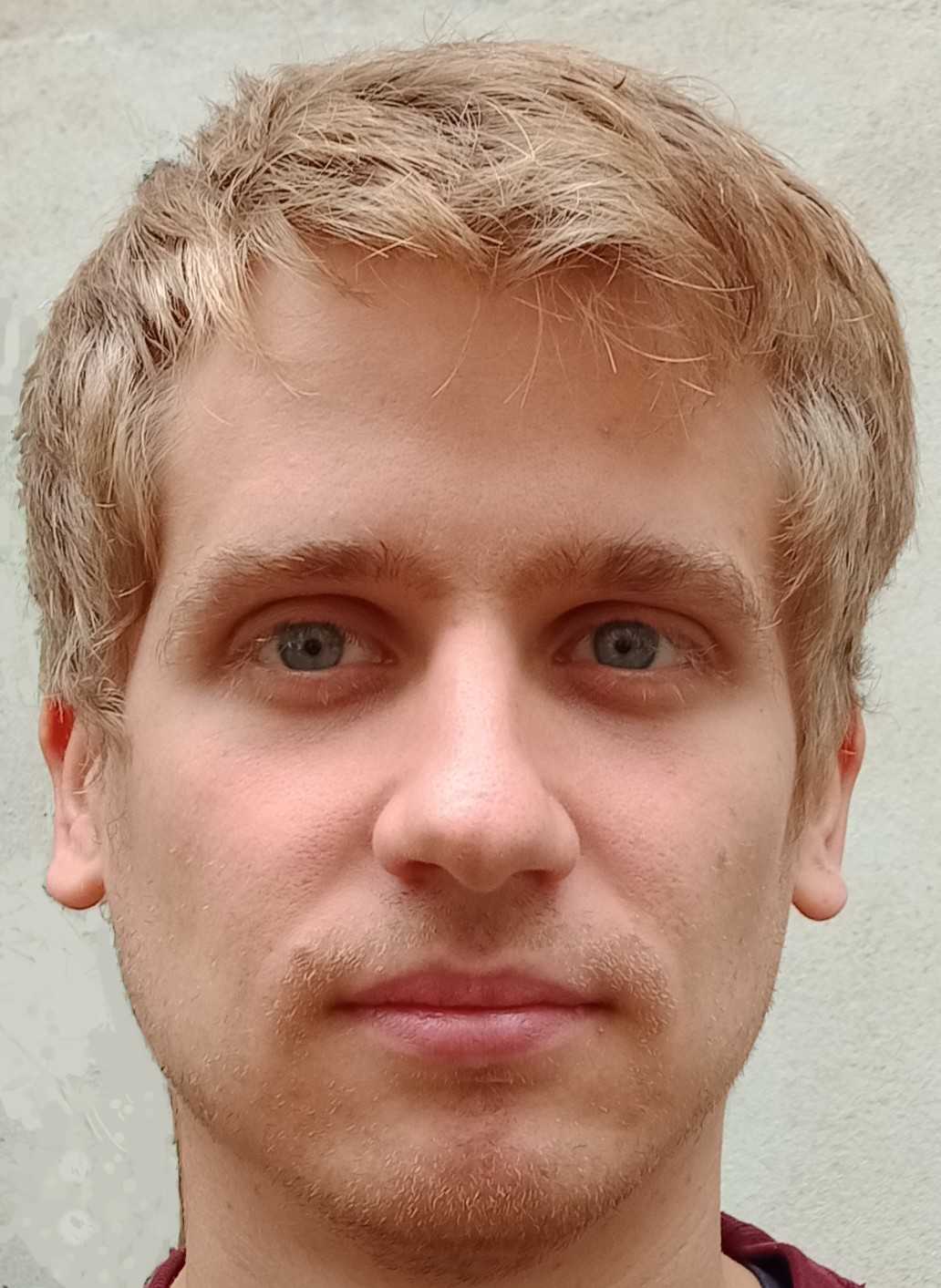David G. Martin
CNRS researcher at Sorbonne Université
Laboratoire de Physique Théorique de la Matière Condensée (LPTMC)
Former student at ENS Paris and Kadanoff fellow at University of Chicago.
Google Scholar LinkedIn ResumeResearch interests
My research aims at providing a broad understanding of the collective phenomena emerging from assemblies of agents.
I have studied motile agents, which are able to self-propel, nonreciprocal agents, which interact through nongradient forces, and monitored agents, which are continuously measured.
The guiding questions underlying my research are the following: what are the macroscopic properties of such assemblies?
How can we characterize these properties and how do they rely on the mechanism driving the agents at the microscopic scale?
During my PhD, I have developed analytical and numerical tools for quantifying agents' behaviors and applied them in various settings, from experimental assemblies of colloidal rollers and flocking models to emerging signatures in motile particles.
During my postdoc, I have delved into two research directions.
The first concerns the large-scale characterization of agent-based models through coarse-graining methods while the other is devoted to the determination of critical properties in Measurement-induced Phase Transitions and nonreciprocal systems.
Using this previous experience, I am currently developing workhorse models for supply chains where agents are production firms entertwined in a network of supply and demand.
In addition, I am also working in computational immunology, where I am focusing on developing Transformers-based AI tools for predicting the binding of antibodies to antigens.
Artificial intelligence and data-driven modelling
-
Predicting epitope-antibody binding through unsupervised machine learning approaches
Predicting the specific binding between a T cell receptor (TCR) and its peptide epitope is a major challenge in immunology, with applications ranging from diagnostics to personalized immunotherapies. This challenge is computationally hard owing to the huge diversity of possible receptors and peptides. To date, machine learning approaches have faced two major hurdles: the scarcity of comprehensive data (linking a peptide to a TCR) and the biases introduced by supervised approaches. Building upon previous works, I aim at enhancing the current unsupervised architectures by incorporating a representation for the V and J genes of the TCR chains, which were unexploited so far. The objective is to develop a more robust and accurate tool to decipher immune recognition.
-
Modelling social behaviors with agent-based systems
Focusing on human residential dynamics in the United States, we use statistical mechanics and machine learning to verify that residential distributions evolve slowly and locally, establishing that a hydrodynamic approach is viable. We then construct a generic hydrodynamic model for social-driven motility which relies on a microscopic utility function ruling agents' moves. Closing the loop, we deduce this utility function by analyzing the results of sociological surveys. Plugging it into our hydrodynamic evolution, we obtain a theory encompassing explicitly the link between microscopic motives and macroscopic behaviors. We use it to illustrate how trends in sociological surveys can explain trends observed in racial segregation.
Publications :
Statistical mechanics for economic modelling
-
Supply chain stability with respect to exogenous shocks: a phase transition
As the recent post-covid crisis showed, supply chains are fragile ecosystems prone to collapses with respect to exogenous shocks. As firms are interconnected through a network of supply and demand, the collapse of one firm can trigger a domino effect leading to a global crash. On one hand, just-in-time production maximizes firms' profits by limiting the management cost of stockpiles. On the other hand, such stockpiles are buffers reinforcing firms' resiliences to external shocks. A natural question thus arises: given the strength of an exogenous ambient noise, what is the optimal stockpile preventing propagating collapses? We are currently studying this question in workhorse network models for supply chains.
-
Optimal growth in population dynamics and portfolio management
The dilemma between the collection of available goods, whose instantaneous rate fluctuate or get depleted, and the stochastic search for new resources lies at the core of the explore-exploit paradigm widely observed in nature : cell colonies spreading in an environment, bankers reinvesting profits...
Optimal mining strategies are slaved to two timescales; one set by the variability of the environment, and the other by the speed of the explorative process. Indeed, if a spot remains fertile during a finite duration neither staying on it for too long (and seeing it depleted) nor leaving it very rapidly (and failing to harvest it properly) will maximize growth. There is, however, an additional lurking danger that must be coped with : localization. One might end up with a distribution concentrated among few abundant patches, and thus in a risky position with respect to shocks.
It is interesting to remark that all these characteristic features are encompassed in simple stochastic growth models, whose analytical and numerical study lies within the reach of current physicist technics. These minimalists model can be further confronted with real data, being it econophysic data (bonds, share) or biological data (cell colonization, population spreading).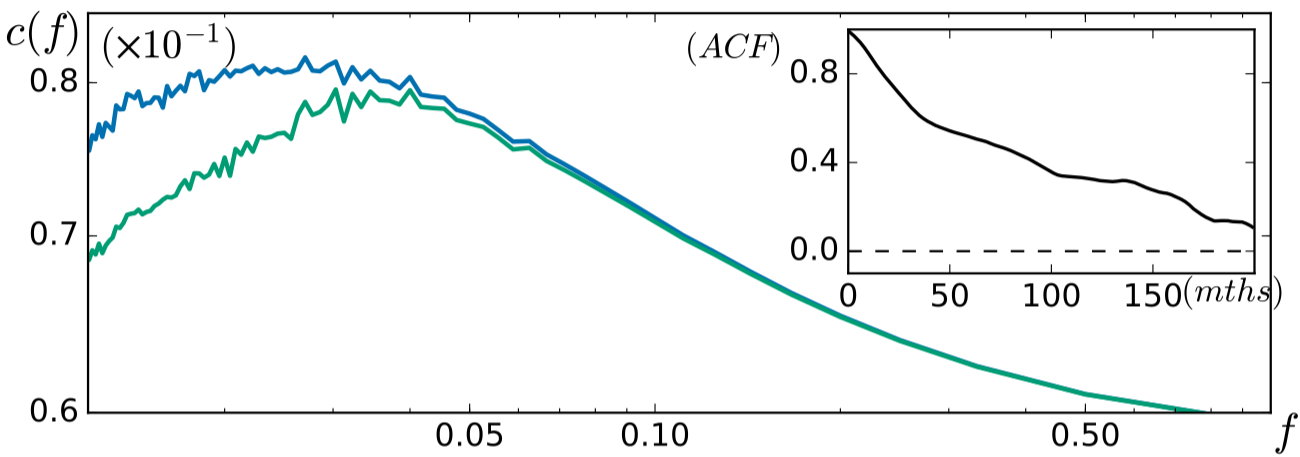
Publications :
Analytical and numerical approaches for agent-based models
-
The Nonreciprocal Ising Model
Systems with nonreciprocal interactions display oscillating states which are observed in finite systems, from neuroscience to active matter. In this work, we investigate the robustness of these phases in the thermodynamic limit by considering a nonreciprocal generalization of the Ising Model and studying its critical behavior through numerical and analytical approaches. Our simulations reveal that oscillating states are destroyed by fluctuations in dimension two but remain stable in dimension three, giving rise to robust spatially-distributed clocks. Using finite-size scaling, we further determine the critical exponents of the transition to this oscillating phase.
Publications :
-
The transition to collective motion in nonreciprocal active matter
Nonreciprocal interactions have recently benefitted from a surge of interest among the Statistical Mechanics community. However, their impact on canonical active systems has only been studied through either top-down phenomenology or mean-field dynamics so far. Together with Prof. Vincenzo Vitelli’s group, we introduced a microscopic active model endowed with nonreciprocal interactions. We then coarse-grained it exactly to obtain a bottom-up hydrodynamics encapsulating the effect of microscopic nonreciprocity at large scale. This allowed us to quantitatively assess the impact of nonreciprocity on one of the paradigmatic transition in active matter: the emergence of collective motion.
Publications :
- D. G. Martin, D. Seara, Y. Avni, M. Fruchart, V. Vitelli
An exact model for the transition to collective motion in nonreciprocal active matter
In press at Phys. Rev. X., arXiv 2307.08251 (July 2025)
arXiv
- D. G. Martin, D. Seara, Y. Avni, M. Fruchart, V. Vitelli
-
Effect of translational noise on Active Ornstein Uhlenbeck Particles
Usual brownian particles are only submitted to a gaussian white noise exhibiting no characteristic time. A more realistic model would further include additional fluctuations, endowed with such a memory time. Unfortunately, this colored noise drives the particle out-of-equilibrium and hinders analytical computations. I developed an exact perturbative expansion of the corresponding steady-state density, opening up theoretical insights for such a model. Together with Thibaut Arnoulx de Pirey, we used it to derive quantitative formulas for three activity-induced phenomena : the deviation from Boltzmann's distribution, the emergence of ratchet current, and the entropy production rate. Surprisingly, we found that these last two signatures, namely the current and the entropy production rate, can be non-monotonic functions of T. Thus, depending on context, switching on translational diffusion may drive the particle closer to or further away from equilibrium.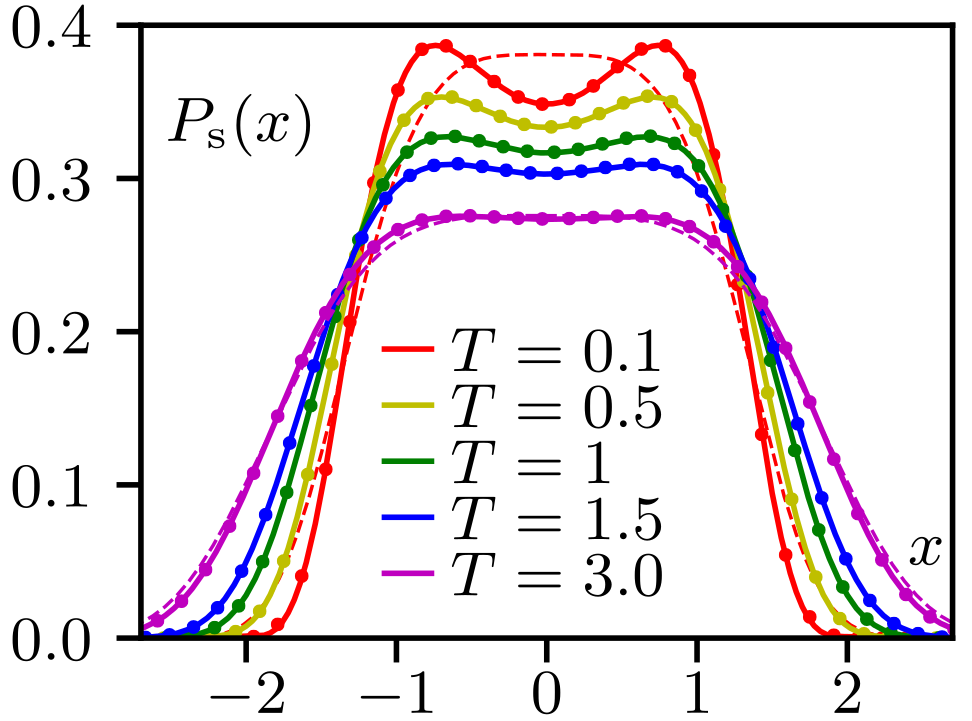
Publications :
-
Statistical Mechanics of Active Ornstein Uhlenbeck Particles
I developed in details the physics of Active Ornstein Uhlenbeck Particles (AOUPs), a canonical model of active agents. More particularly, I devised a perturbative scheme yielding the exact stationary measure at small activity. Building on this new result, I made quantitative predictions on activity-induced phenomena such as accumulation near walls and current emergence in Feymann ratchet. Such features of AOUPs had previously been observed and expected but had never been described both qualitatively and quantitatively. Careful langevin simulations using a Heun scheme coupled to an exact numerical integration of the active noise validated my formulas.Publications :
-
Emergence of collective motion in topologically aligning models
I studied the order of the transition to collective motion at the field-theoretical level. By using quasi linear renormalization, I showed that the fluctuations of the order parameter are triggering a density-dependent shift of the critical temperature. For metric model, this shift generically turns a spurious mean field continuous transition into a discontinuous one. Surprisingly, the mechanism also holds for topological models in which length-free interactions were previously believed to lead to continuous transitions. I confirmed my analytical predictions both by direct simulations of stochastic field theories (semi spectral method) and by numerical implementation of microscopic models (interacting langevin dynamic).
Publications :
- D. G. Martin, H. Chaté, C. Nardini, A. Solon, J. Tailleur and F. Van Wijland
Fluctuation-induced phase separation in metric and topological models of collective motion
Phys. Rev. Lett. 126, 148001 (April 2021), arXiv 2008.01397
PRL arXiv - D. G. Martin, G. Spera, H. Chaté, C. Duclut, C. Nardini, J. Tailleur and F. Van Wijland
Fluctuation-induced First Order Transition to Collective motion
J. Stat. Mech. 084003, arXiv 2402.05078 (August 2024)
JSTAT arXiv
- D. G. Martin, H. Chaté, C. Nardini, A. Solon, J. Tailleur and F. Van Wijland
-
Activity-induced solidification
In experiments realized in the group of D. Bartolo, dense assemblies of Quincke rollers collectively propelling undergo an arrested phase separation above a critical density : they lose their orientational order and jam. Combining flocking equations with the slowing down of rollers upon increasing density (or the physics of MIPS), I developed a minimalist hydrodynamic theory to account for this phenomenology. Solving numerically my PDE by using a semi-spectral scheme, I indeed showed the existence of a first order phase transition between a jammed solid state and a polar liquid state.Publications :
-
Thermodynamic engine fuelled by active particles
Stochastic thermodynamic is a theoretical framework allowing microscopic definitions of thermodynamic quantities such as heat, work or energy. When averaged over the phase-space, these quantities can be mapped to their corresponnding macroscopic counterparts and one can show that they are consistents with the empirical laws of thermodynamic.A canonical experiment exploiting stochastic thermodynamic is the colloidal heat engine : a colloidal tracer is immersed into a fluctuating bath and confined by a potential. The external operator can then vary both the confining potential and the fluctuations of the bath to create a microscopic heat engine. During the past decade, several experimental realizations have demonstrated the feasibility of building such engines, both for an equilibrium and a nonequilibrium bath.
One might then wonder what happens when the tracer becomes active : is it still possible to correctly define microscopic thermodynamic quantities ? Do they still map to macroscopic ones ? Does activity enhance or reduce the engine's power production ?
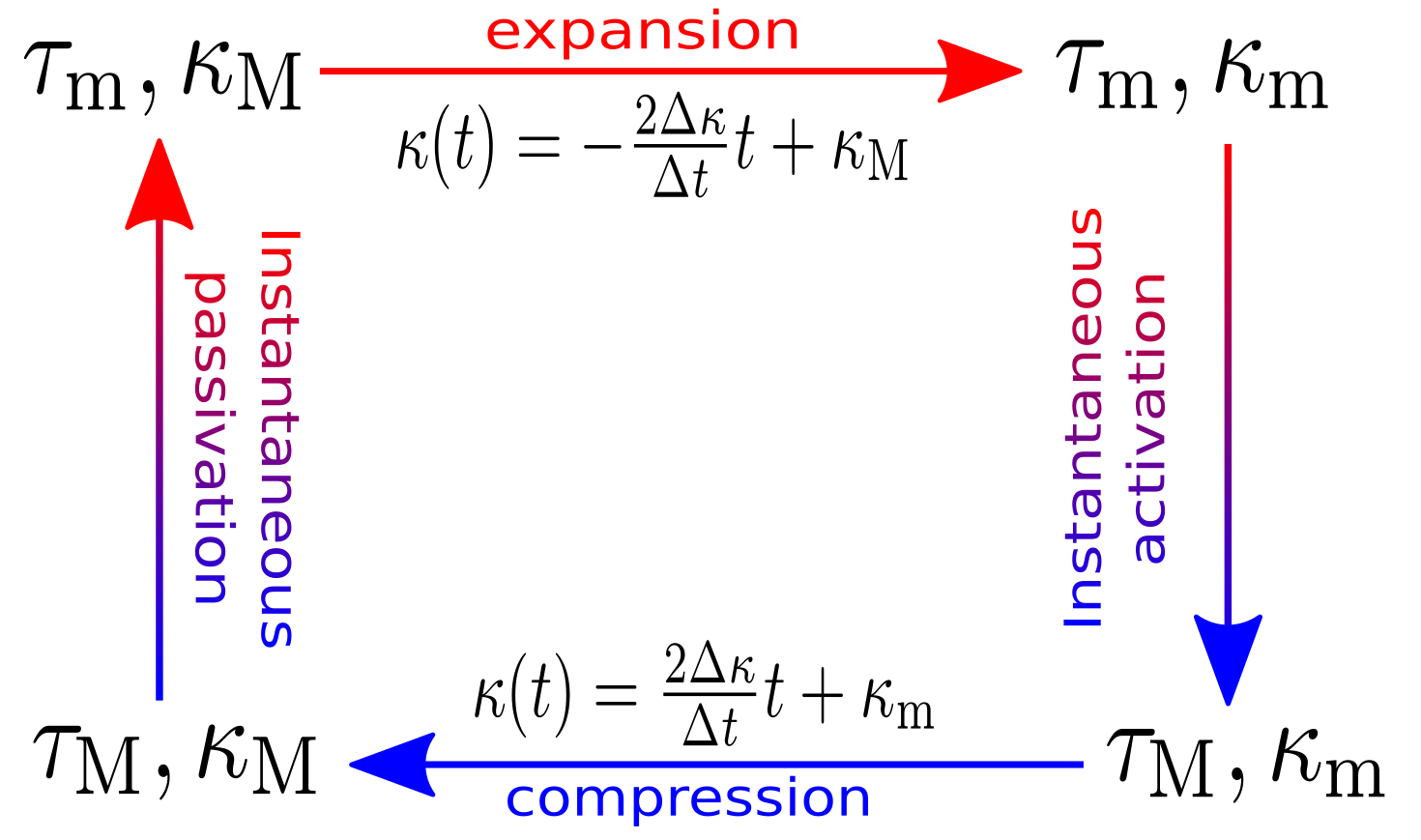
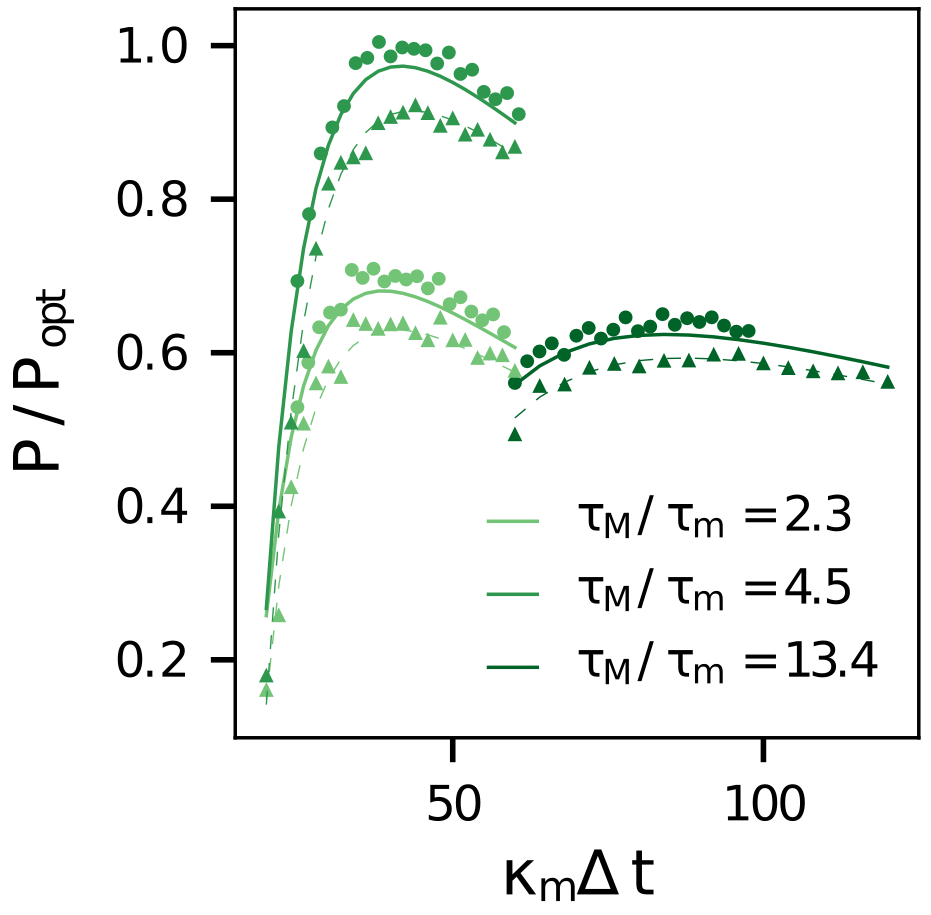
Publications :
Monitored systems in quantum mechanics
-
KPZ physics and Measurement-induced Phase Transitions (MiPTs)
MiPTs are a hot topic at the crossroad of statistical physics and quantum information. In a serie of works, together with Dr. Tony Jin, we highlighted a connection between MiPTs and the physics of surface growth through the KPZ equation. Drawing on this connection, we have shown that MiPTs are generic transitions, occurring in classical and quantum statistical physics alike, in many-body and single-body systems alike, and that their emergence crucially depends on dimensionality.
Publications :
- T. Jin and D. G. Martin
Kardar-Parisi-Zhang Physics and Phase Transition in a Classical Single Random Walker under Continuous Measurement
Phys. Rev. Lett. (November 2022), arXiv 2204.00070
PRL arXiv - T. Jin and D. G. Martin
Measurement-induced phase transition in a single-body tight-binding model
Phys. Rev. B 110, arXiv 2309.15034 (August 2024)
PRB arXiv
- T. Jin and D. G. Martin
Teaching experiences
So far, I have mainly given lectures in the medicine and pharmacy cursus at Université Paris Cité.
- (2018-2021) Exercise sessions in first year of medicine cursus (PACES) at Université Paris Cité: electrostatics, hydrodynamics, thermodynamics.
- (2018-2021) Geometrical and wave optics lectures in third year of pharmacy cursus at Université Paris Cité.
- (2018-2021) Goniometry and rheometry lab work sessions in third year of pharmacy cursus at Université Paris Cité.
I am also the organizer and treasurer of Les Gustins Summer School, a gathering promoting discussions between young researchers in physics and mathematics.
Publication list
- A. Tavera-Vázquez, D. Martin, H. Ren, S. Rubin, A. Córdoba, R. Zhang, V. Vitelli, J. J. de Pablo
Quorum sensing of light-activated colloids in nematic liquid crystals
Under review at Nature Materials, arXiv 2507.10866 (July 2025)
arXiv - D. G. Martin, D. Seara, Y. Avni, M. Fruchart, V. Vitelli
The transition to collective motion in nonreciprocal active matter: coarse graining agent-based models into fluctuating hydrodynamics
In press at Phys. Rev. X., arXiv 2307.08251 (July 2025)
arXiv - DS. Seara, J. Colen, M. Fruchart, Y. Avni, D. Martin and V. Vitelli
Sociohydrodynamics: data-driven modelling of social behavior
PNAS 122 (august 2025), arXiv 2312.17627
PNAS arXiv - Y. Avni, M. Fruchart, D. Martin, D. Seara, V. Vitelli
The non-reciprocal Ising Model
Phys. Rev. Lett. 134, arXiv 2311.05471 (March 2025)
PRL arXiv - Y. Avni, M. Fruchart, D. Martin, D. Seara, V. Vitelli
Dynamical phase transitions in the nonreciprocal Ising model
Phys. Rev. E 111, arXiv 2311.05471 (March 2025)
PRE arXiv - D. G. Martin, G. Spera, H. Chaté, C. Duclut, C. Nardini, J. Tailleur and F. Van Wijland
Fluctuation-induced First Order Transition to Collective motion
J. Stat. Mech. 084003, arXiv 2402.05078 (August 2024)
JSTAT arXiv - T. Jin and D. G. Martin
Measurement-induced phase transition in a single-body tight-binding model
Phys. Rev. B 110, arXiv 2309.15034 (August 2024)
PRB arXiv - T. Jin and D. G. Martin
Kardar-Parisi-Zhang Physics and Phase Transition in a Classical Single Random Walker under Continuous Measurement
Phys. Rev. Lett. (November 2022), arXiv 2204.00070
PRL arXiv - D. G. Martin and T. Arnoulx de Pirey
AOUP in the presence of Brownian noise: a perturbative approach
J. Stat. Mech. 043205 (April 2021), arXiv 2009.13476
JSTAT arXiv - D. G. Martin, J. O'byrne, M. E. Cates, E. Fodor, C. Nardini, J. Tailleur and F. Van Wijland
Statistical Mechanics of Active Ornstein Uhlenbeck Particles
Phys. Rev. E 103, 032607 (March 2021), arXiv 2008.12972
PRE arXiv - D. G. Martin, H. Chaté, C. Nardini, A. Solon, J. Tailleur and F. Van Wijland
Fluctuation-induced phase separation in metric and topological models of collective motion
Phys. Rev. Lett. 126, 148001 (April 2021), arXiv 2008.01397
PRL arXiv - D. Geyer, David G. Martin, J. Tailleur and D. Bartolo
Freezing a Flock: Motility-Induced Phase Separation in Polar Active Liquids
Phys. Rev. X 9 031043 (September 2019), arXiv 1903.01134
PRX arXiv - Thomas Gueudré and David G. Martin
Optimal growth entails risky localization in population dynamics
EPL (Europhys. Lett.) 121, 68005 (may 2018) arXiv 1712.00979
Selected as editor's choice
Selected as EPL Highlights
EPL arXiv - D. Martin, C. Nardini, M. E. Cates, and É. Fodor
Extracting maximum power from active colloidal heat engines
EPL (Europhys. Lett.) 121, 60005 (may 2018) arXiv 1803.01620
Selected as editor's choice
Selected as EPL Highlights
EPL arXiv
Preprints
2025
2024
2022
2021
2019
2018
Fellowships/Prizes/Awards
- November 2024: laureate of the CNRS's research scientist competitive exam. Starting package of 20k$.
- April 2023: Recipient of SLiM-Ex Scientist Exchange Award (3k$) for a research stay at University of Santa Barbara with Prof. Cristina Marchetti.
- October 2022: Recipient of the 1k$ PhD award "Prix de thèse des systèmes complexes".
- 2021-2024: Kadanoff Postdoctoral Fellowship at the University of Chicago.
- 2021-2022: Joint grant FACCTS of 25k$ with Vincenzo Vitelli at the University of Chicago.
- September 2019: best poster prize award at the french-german WE-Heraeus Seminar "Novel physics in living systems" in Roscoff, France.
Contact Me
Laboratoire LPTMC
4 place Jussieu, 75005 Paris, France
david.martin.3@cnrs.fr
